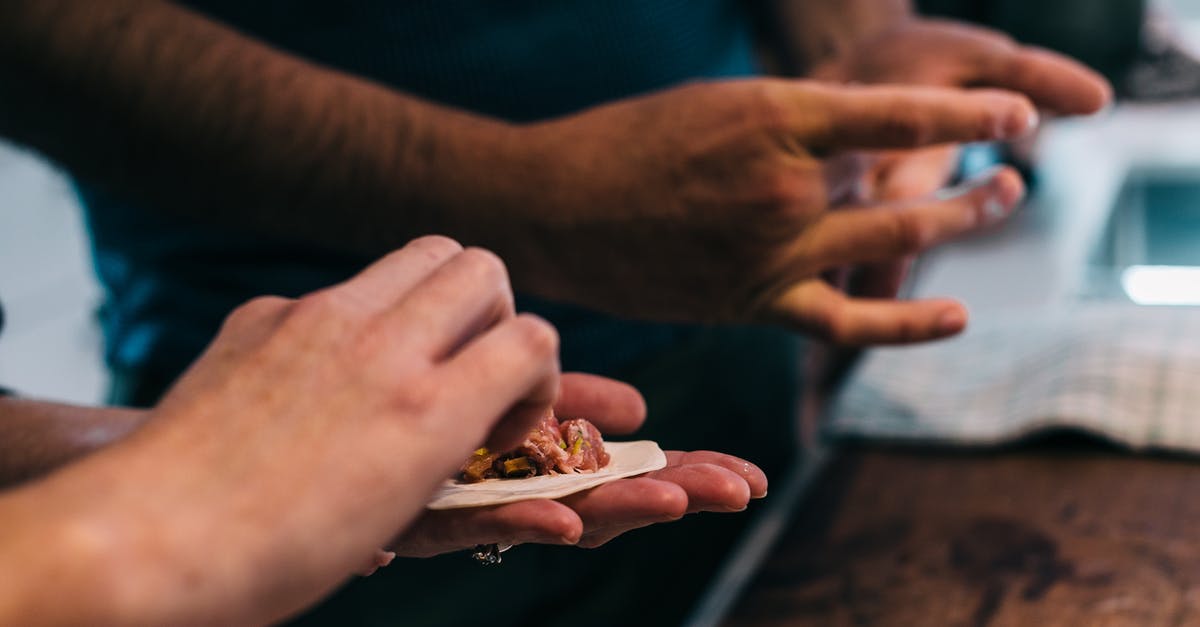Explaining raising dough

I bought dough containers and would like to know a couple things: When I mix the dough do I put it in the refrigerator right away and can I seal it with the lid on or do I use seran wrap? When I take the dough out how long does the dough have to sit at room temperature? Do I shar it first?
Best Answer
Your question isn't as clear as it could be, but I'll try to answer what I think you're asking. You've bought a container specifically for making bread dough in and you have questions about it, right?
You asked if you should put your dough in the fridge right after making it. The answer is, it depends on what you're making. You can make bread where the bread never sees the inside of the refrigerator. What happens in this process is you're mixing together flour and water for your bread. The way you get your rise is with yeast. Yeast is a living organism. It feeds off of the bread dough and creates gases. These are trapped in the dough, creating small pockets which you see as rise.
There are different ways to achieve this. You have sourdough where you keep a single strain of yeast alive indefinitely. You leave these out on the counter when you're staring them or reviving them to make bread. However, you can store them in the refrigerator to retard their growth. Otherwise, you'd have to add new dough/feed every day. The other way is to add instant or active yeast, which come in a convenient package. These all work the same way, it's just about storage, speed, or flavor as to which you choose to use.
There are two reasons you could put your dough in the refrigerator. One is to slow the yeasts activity and cause a slower rise. It could be because of timing or it could be because of flavor. I have a pizza dough recipe and because of the families work schedule, I have to make the dough and leave it in the fridge for almost 24hrs, instead of the 4-6hrs it calls for. I've had the chance to make it both ways. When I stick it in the fridge for a few hours, it's a really good crust. However, when I leave it in for 24hrs, it has a sour quality reminiscent of sourdough. That's because as yeast uses up it's food source, it begins to produce alcohol. This is fermenting, similar to when making beer or wine. In those cases also, yeast feed on the sugars in the mash and turn it into alcohol.
So it's up to you and your recipe as to how long to refrigerate if at all. As for wrapping it, you should cover the dough whether you put it in the fridge or not. The reason is simply because you don't want it to dry out. You can either use a damp towel, saran wrap, the lid for the container (loose, not snapped on tight), or anything else you could use in the same way.
Just an FYI, as I mentioned in the previous paragraph, you shouldn't put anything tight fitting on your container and you should have a container at least twice the volume as your dough. You can eyeball that. The reason is that your dough will expand (rise) and if your container isn't big enough, you're going to end up with a sticky mess all over the place. I think you could imagine what would happen if you had a tight fitting or even a locked on lid on your container and the pressure built up as the yeast turned the sugars into gases. You're not going to have a good time.
When you bring dough out of the fridge you want let it warm up a little. If you're making something like sourdough, then you want to bring it out a minimum of 12hrs ahead of time and feed it. You'll wait till it's doubling in size before using it. With other dough's, it might not be long of a wait at all. Your recipe should tell you and after you make a few breads, you'll get an idea of how long it needs to come out of the fridge before use.
I hope this answered all your questions or at least helped you narrow it down for your next question.
Pictures about "Explaining raising dough"



Quick Answer about "Explaining raising dough"
During fermentation, carbon dioxide is produced and trapped as tiny pockets of air within the dough. This causes it to rise. During baking the carbon dioxide expands and causes the bread to rise further. The alcohol produced during fermentation evaporates during the bread baking process.What is the process of rising dough?
When you add yeast to water and flour to create dough, it eats up the sugars in the flour and excretes carbon dioxide gas and ethanol \u2014 this process is called fermentation. The gluten in the dough traps the carbon dioxide gas, preventing it from escaping. The only place for it to go is up, and so the bread rises.What does rising the dough mean?
The temperature at which dough rises has a direct effect on the flavor of your final product. The longer dough rises (up to a point), the more flavor it develops. Conversely, dough that rises too quickly produces bread with flat flavor.Understanding Bread Making Step-By-Step | kneading, proofing, bulk fermentation, shaping
Sources: Stack Exchange - This article follows the attribution requirements of Stack Exchange and is licensed under CC BY-SA 3.0.
Images: Rachel Claire, Angela Roma, Angela Roma, Angela Roma
